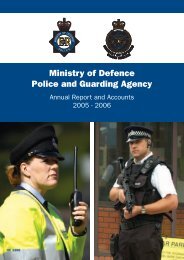Issue 9 Jan 2009.indd - Ministry of Defence
Issue 9 Jan 2009.indd - Ministry of Defence
Issue 9 Jan 2009.indd - Ministry of Defence
Create successful ePaper yourself
Turn your PDF publications into a flip-book with our unique Google optimized e-Paper software.
4 news<br />
NEWSREEL<br />
Building work<br />
is on the up<br />
PILING work at the site<br />
<strong>of</strong> the new building<br />
– Neighbourhood Five<br />
– at DE&S headquarters<br />
at Abbey Wood has been<br />
completed ahead <strong>of</strong><br />
schedule. Preparation<br />
<strong>of</strong> the site for the next<br />
stage is beginning,<br />
including removing<br />
waste to be broken<br />
down for hardcore at<br />
another construction<br />
site. Foundations are<br />
set to be constructed in<br />
the New Year including<br />
the concrete slab<br />
as base <strong>of</strong> the new<br />
building.<br />
UORs top £1bn<br />
THE latest estimate<br />
for Urgent Operational<br />
Requirement spending<br />
for 2008-09 is around<br />
£1 billion. This falls<br />
comfortably within<br />
spending predicted in<br />
autumn 2007, according<br />
to Minister for <strong>Defence</strong><br />
Equipment and Support<br />
Quentin Davies.<br />
Typhoon fl ies in<br />
FIFTY ONE Typhoon<br />
aircraft had been<br />
delivered to the RAF by<br />
the end <strong>of</strong> last October,<br />
according to fi gures<br />
released to Parliament.<br />
Forty-nine <strong>of</strong> them have<br />
entered operational<br />
service, 34 in the<br />
forward fl eet available<br />
to front line commands<br />
for operational and<br />
training. By that date<br />
the fl eet had fl own<br />
24,236 hours.<br />
TriStars work on<br />
THE RAF’s fl eet <strong>of</strong><br />
TriStars, currently<br />
providing the airbridge<br />
between the UK and the<br />
Gulf region, is expected<br />
to complete up to 11,560<br />
fl ying hours for each<br />
<strong>of</strong> the next six years<br />
before the aircraft’s<br />
out <strong>of</strong> service date<br />
in 2014-15. The VC10<br />
fl eet completed 9,940<br />
from October 2007 to<br />
September 2008 and is<br />
expected to complete<br />
9,260 in each <strong>of</strong> the next<br />
three years, reducing<br />
then to an out <strong>of</strong> service<br />
date <strong>of</strong> 2014.<br />
RAF takes on ASTOR<br />
Sentinel aircraft will carry the<br />
new all-weather capability<br />
THE STATE-OF-THE-ART<br />
Airborne Stand-Off Radar<br />
(ASTOR) ground surveillance<br />
system – which can spot ground<br />
targets from more than seven<br />
miles up – has been accepted<br />
into service by the RAF.<br />
The new £860 million system<br />
reached its in-service date on<br />
19 November and will provide<br />
a new all-weather intelligence,<br />
surveillance, target acquisition<br />
and reconnaissance capability<br />
from the Sentinel R1 aircraft.<br />
ASTOR has been described<br />
as ‘a unique and technologically<br />
advanced capability’ by Quentin<br />
Davies, Minister for <strong>Defence</strong><br />
Equipment and Support. A crew<br />
<strong>of</strong> five on the aircraft will be able<br />
to detect and recognise moving,<br />
static and fixed targets at stand<strong>of</strong>f<br />
range.<br />
Information is transmitted in<br />
near-real time to commanders<br />
on the ground, enabling rapid<br />
tactical planning and efficient<br />
cueing <strong>of</strong> other sensor and<br />
attacks systems such as the<br />
Reaper unmanned aerial<br />
vehicle.<br />
Bill Chrispin, leader <strong>of</strong> DE&S’<br />
ASTOR IPT, said acceptance<br />
into service with the RAF was<br />
the initial stage in the roll-out<br />
<strong>of</strong> an entirely new capability<br />
for the UK Armed Forces. Full<br />
operating capability is expected<br />
within two years.<br />
“Only through a strong<br />
working relationship between<br />
the MOD and the prime<br />
contractor, Raytheon Systems,<br />
has ASTOR matured into what<br />
we see today,” he said.<br />
“No 5 Squadron at RAF<br />
Waddington has risen to<br />
the doctrinal and training<br />
challenges <strong>of</strong> this dynamic<br />
platform, and is now well set to<br />
face the future challenges.”<br />
James Klein, vice president<br />
Left: a Sentinel<br />
R1 aircraft during<br />
trials over the<br />
Mojave desert<br />
Below: the clarity<br />
<strong>of</strong> ASTOR imagery<br />
will be vital to<br />
commanders on<br />
the ground<br />
<strong>of</strong> Raytheon’s Mission Systems<br />
Integration business added:<br />
“We are confident ASTOR will<br />
be a critical asset, providing<br />
the actionable intelligence<br />
necessary to help protect British<br />
and coalition forces worldwide.<br />
“Raytheon is excited to see<br />
ASTOR enter service. This<br />
world-class capability is the<br />
product <strong>of</strong> great teamwork with<br />
the MOD, 5 Squadron, and our<br />
industry partners.”<br />
Other companies involved<br />
in the project include L3<br />
Com IS (system integration<br />
and design authority), Lucas<br />
Aerospace (electrical systems),<br />
Messier Dowty (landing<br />
gear), AgustaWestland<br />
(doors), Marshalls (tactical<br />
and operational level ground<br />
stations), BAE Systems (defensive<br />
aids), Selex (radar components),<br />
and Rolls-Royce Deutschland<br />
(BR710 engines).<br />
MOD praised for agile response to new threats<br />
THE MOD continues to respond well and adapt<br />
to emerging threats to get the right kit to troops<br />
as quickly as possible.<br />
“When it comes to delivery <strong>of</strong> equipment<br />
for our forces we should never be complacent,”<br />
said Quentin Davies, Minister for <strong>Defence</strong><br />
Equipment and Support. “We always look to<br />
make improvements and build on the progress<br />
we have made.”<br />
Mr Davies was replying to the National Audit<br />
Office report on December 18 on major projects<br />
in 2007-08, which looked at 20 out <strong>of</strong> 350 projects<br />
worth more than £65 billion.<br />
“We continuously adapt to emerging threats,<br />
something the report acknowledges, procuring<br />
new equipment for urgent operational use in<br />
Iraq and Afghanistan,” he said.<br />
The report acknowledges cost growth and<br />
time delays in projects that pre-date reforms to<br />
defence acquisition are not a complete reflection<br />
<strong>of</strong> progress being made.<br />
The National Audit Office added it recognises<br />
the complexity <strong>of</strong> defence acquisition and rapidly<br />
changing operational environments that defence<br />
procurement operates in. The MOD said it was<br />
good the report acknowledged decisions MOD<br />
had taken in the light <strong>of</strong> changing priorities.<br />
� Equipment successes in 2008: Page 13.


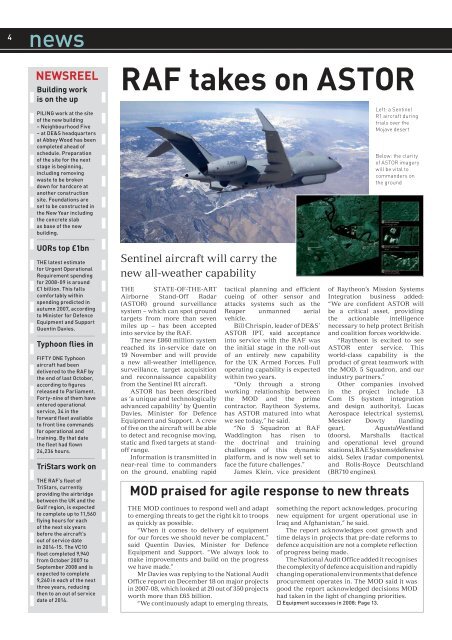
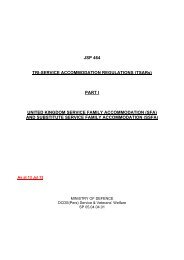
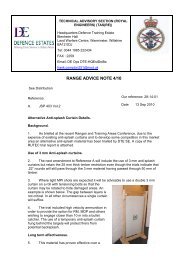

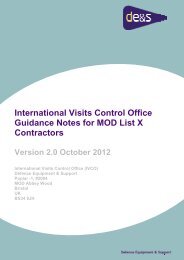

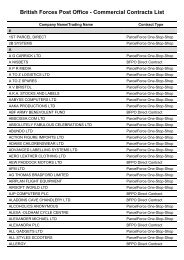

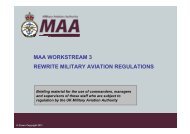

![MAA Regulatory Publications - FAQs PDF [37.3 KB]](https://img.yumpu.com/5906104/1/184x260/maa-regulatory-publications-faqs-pdf-373-kb.jpg?quality=85)
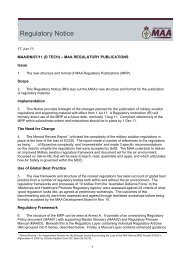
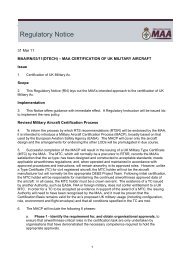
![3750 edition 6 PDF [263.5 KB] - Ministry of Defence](https://img.yumpu.com/5901071/1/184x260/3750-edition-6-pdf-2635-kb-ministry-of-defence.jpg?quality=85)

